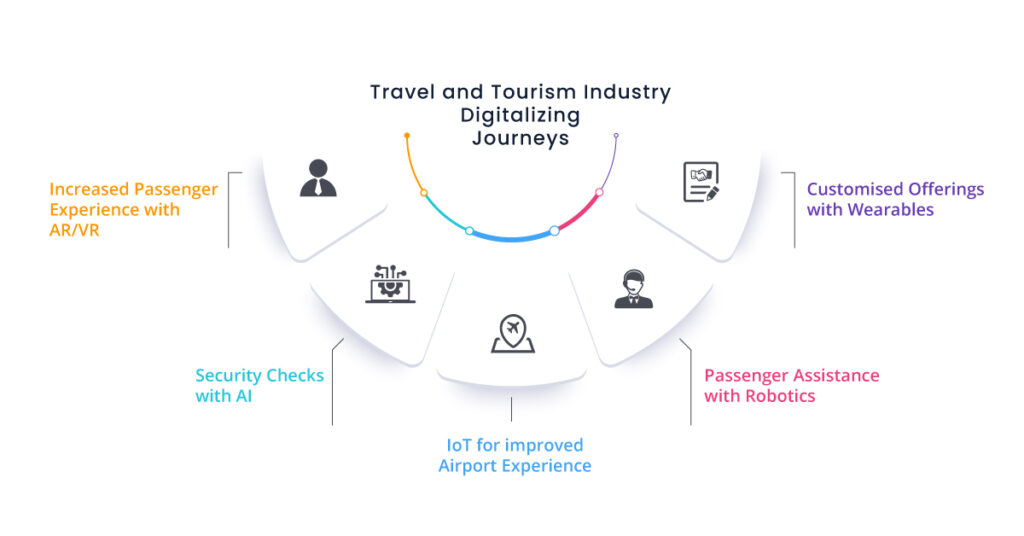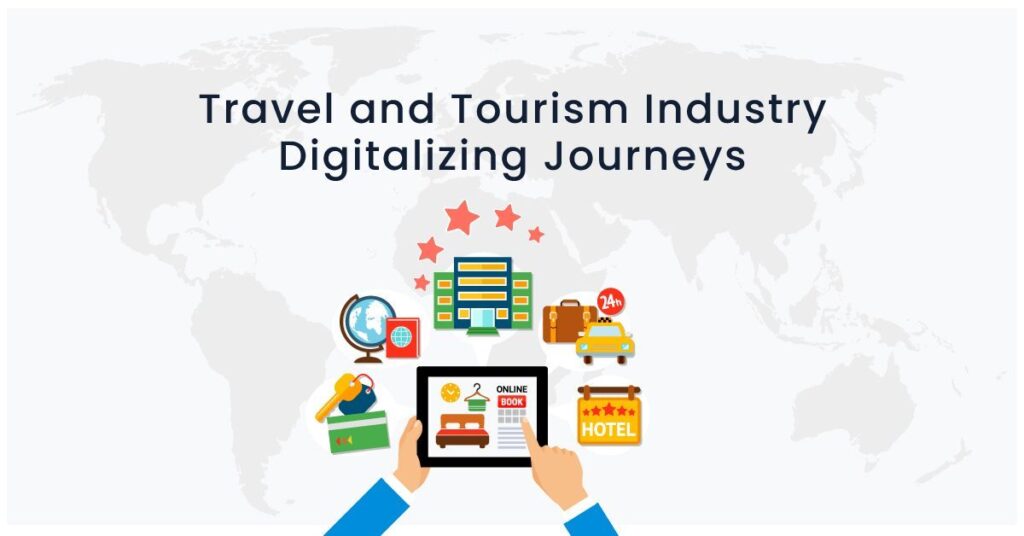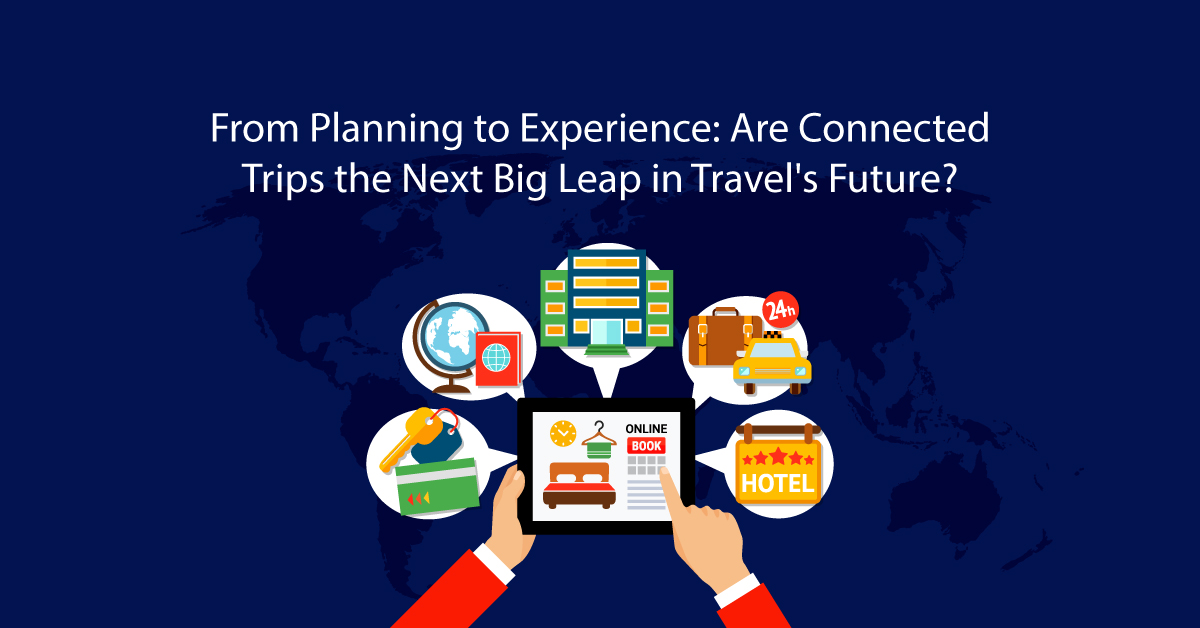It’s a fact that the pandemic completely stalled the world travel and tourism industry at one point. However, if you look back now, when the impact of the virus is subsiding, people are getting used to living with it, the temporary setback offered more than it took to the travel industry, especially airlines across the world. The experience made the travel industry realize the importance of digitalization and modern tech to facilitate journeys.
Today, airlines worldwide are promoting contactless journeys because it’s imperative for the industry to bring back the lost confidence in the passenger.
“Every CEO that I speak to agrees about accelerating digital strategies,”
– MD, Travel and Transport, IBM.
While passengers today expect a more seamless travel experience from the airlines. In a survey, IATA recorded 10,408 passengers’ responses from 145 countries. And the insights were astonishing in terms of what passengers expect from the fliers. As many as 65% of respondents were willing to share personal data for expedited security checks. About 70% of passengers favored self-service baggage check-ins.
Also, the survey showed the passengers wanted real-time information throughout their journey, 82% wanted real-time flight status on their phone, and about half of the respondents favored getting the real-time status of their baggage.
Therefore, the World Travel and Tourism industry is willing to digitize journeys, and the expectations from the travelers are also in public. Then, let’s have a deeper look at what the industry is doing to bring technology into travel.
Five Ways World Travel and Tourism Industry Enabling Seamless Travel Through Digitalization

The world travel and tourism industry is gradually reeling from the bumps of the pandemic. And navigating through the realities of the day is not easy – the “new normal” is new for the travel industry as well. There’s no precedent for taking reference from and dealing with it. That said, modern technologies are helping the travel industry a big way to get the ball rolling again.
So, now, we look at five major ways world travel and the tourism industry, particularly airlines, deploy modern tech to ensure efficient and safe journeys.
#1 Increased Passenger Experience with Virtual and Augmented Reality
The likes of Air New Zealand and Pratt & Whitney are pumping massive money into AR/VR systems to provide a better in-flight experience to passengers. Air New Zealand partnered with Microsoft Hololens to identify passenger mood and similar details. The information helps cabin crew offer more personalized offerings to traveling passengers.
On the other hand, some carriers are also offering in-flight virtual tours before arrival. And using VR for cabin crew training.
Recommended: Five Emerging Technology Trends in Travel Industry
#2 Efficient Security Checks with Artificial Intelligence
Against the backdrop of more stringent rules and covid protocols, airports are using AI to speed up security check operations and offer passengers a better traveling experience.
Not just the carriers, governments worldwide are also investing heavily in AI security systems. In the previous financial year, the UK government pumped 1.8 million Euros to build new AI security systems, which bolster security and reduce passengers’ wait time.
#3 Internet of Things for Improved Airport Experience
The airlines are now gradually understanding the customer experience is the primary variable that gives them a competitive advantage. And at a time when the travel industry is on the path of recovery from the chaos of the pandemic, it becomes more critical. Airlines are now increasingly employing beacon technology for better to and fro communication from carrier to flier.
The beacon technology assists passengers throughout their time at the airport, from providing nearby promotional offers, the status of security check, updated time of departure to minor things like informing the passenger of the correct gate number.
#4 Passenger Assistance with Robotics
Airports are using robots to fill the gap between human assistance and digital solutions. One such example is Indianapolis International Airport, which in partnership with Double Robotics, offers a “web-cam on wheels” for special ability passengers. The camera directly connects to the human assistant through a video link to resolve passenger challenges.
Fliers are also using robots as “dynamic environment analyzers.” Indira Gandhi International Airport, New Delhi, uses a robotic technology called RADA by Tata labs to disseminate information like departure gates, weather at the destination, and flight status by simple boarding pass scan.
Recommended: Is Bliesure the Future of Post Pandemic Business Travel?
#5 Personalised Customer Offerings with Wearables and IoT
Along with the demand for a seamless travel experience, customer expectations are also evolving. With an increasing number of customers who use wearables and are connected by IoT, fliers can use data to offer more centralized and personalized offerings to passengers.
Some airports are already using IoT to push luggage information to passenger’s smartphones. As mentioned earlier, most passengers today are willing to trade personal data for getting seamless travel experience.
Modern technologies are playing a significant role in bringing back passengers’ confidence, severely hit by the pandemic, and following protocols. And with the digitalization of journeys, the world travel and tourism industry looks poised for a strong recovery.
Vervotech is a leading Hotel Mapping and Room Mapping API that leverages the power of AI and ML to quickly and accurately identify each property listing through the verification of multiple parameters. With one of the industry’s best coverage of 98% and an accuracy of 99.999%, Vervotech is quickly becoming the mapping software of choice for all leading global companies operating in the travel and hospitality industry. To learn more about Vervotech and the ways it can enhance your business in the long run contact us: sales@vervotech.com








